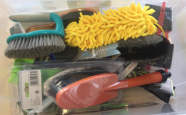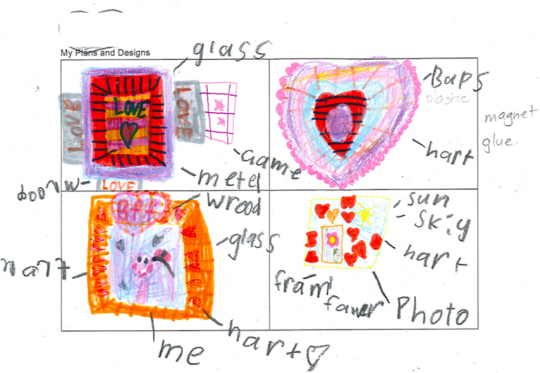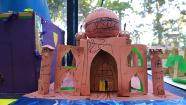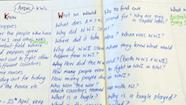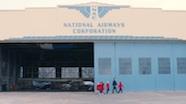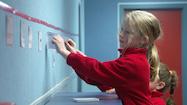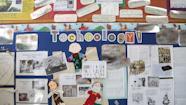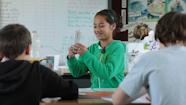Linking technology and literacy
An evolving teaching inquiry
Waitaki Valley School was in the midst of a teaching inquiry with a focus on raising achievement in writing.
Teachers were eager to enable students to use their literacy and numeracy skills in curriculum contexts such as technology and science – learning areas that they observed had proved to be engaging for the boys in their classes.
They considered the advantages of students combining their technology understandings with their literacy learning. This meant including technology in the morning programmes traditionally timetabled for literacy and numeracy. Students could develop their literacy and numeracy skills by recording and commenting on their observations, practical work, and understandings in technology.
Teaching and learning approaches
Principal Deidre Senior and the teachers worked with accredited facilitator Cheryl Pym to build their understandings of the technology learning area and to plan a robust technology unit that integrated technology.
The professional development and learning in technology included an initial exploration of the indicators of progression:
- how they are structured
- their use in tracking progression
- the straightforward guidance they provide for teachers.
More than just making – a focus on attributes
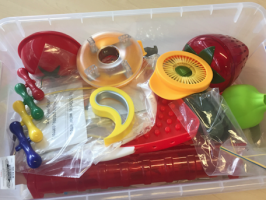
Another focus of the professional development was for teachers to understand that the technology learning area was more than just the technological practice strand and making, and how the strands Technological Knowledge and Nature of Technology provided meaning and depth to student learning experiences.
The PLD programme had a central focus on attributes, both physical and functional, and the importance of these in accurately describing technological outcomes. This gave the teachers familiarity with the subject-specific vocabulary and an understanding of how they could begin to structure writing in technology.
Teachers discovered they could weave understandings of the characteristics of technological outcomes (CoTO) component (part of the Nature of Technology strand) into students’ technological practice. For example, when teachers examined the physical and functional attributes of fridge magnets, they gained an understanding of the content required in the conceptual statement and attributes for brief development when making a magnet.
Teachers recognised that this was an opportunity to give students vocabulary for materials (technological product component) that could be used to model and make a fridge magnet.
Exploring unfamiliar objects
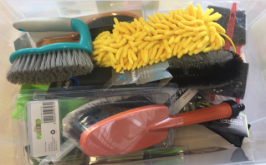
Deidre made up several kits of technological outcomes – some with a theme, for example, brushes, and others with technological outcomes that would be unfamiliar to students.
Examining unfamiliar objects and exploring their physical and functional attributes is a great way for students to develop their understanding of the characteristics of technological outcomes component at level 3. See the level 3 CoTO indicator:
- "Students can describe possible uses and functions of a technological outcome based on clues provided by its physical attributes."
Examples of writing
Teachers shared examples of student writing from other schools. These had been developed with Toni Tippett from St Peter’s College in Gore. See St Peter's College: Strategies for improvement in years 7–13.
Deidre plans to establish folders of examples of students’ writing in technology to provide reference exemplars for teachers when assessing writing and technology understandings.
Learning outcomes
Waitaki Valley School has a modern learning environment, separated into two “hubs”, junior (Teina) and senior (Tuakana). Teachers are working together to develop a unit of work based on their new understandings in technology and its integration with literacy.
Students in Teina are exploring products and developing their literacy in technology by talking about and writing about the attributes of the fridge magnets they are making.
Students in Teikana are developing a recipe book as a fund-raiser. They have decided to add a celebrity section to their book.
What next?
Updates on Waitaki Valley School's progress with their professional learning and integrated units, as well as further resources, will be added here as they become available.
A recipe book: Linking technology and literacy
Years 7–8 students connected with their community, celebrated their cultural diversity, and raised money with their published and printed recipe book.
Related videos
Building technology inquiries in years 1–6 (02:47)
Shannon Maloney talks about building rich technology units within a programme of inquiry in years 1–6.
Technology as a part of a cross-curriculum inquiry (04:52)
Anne Bunton explains how the technology learning area gave purpose to a class project.
Technology and literacy in years 3–4: Flight inquiry (04:56)
Andrea Robertson describes the richness of their "amazing flight inquiry" – incorporating EOTC and learning in technology, literacy, and numeracy. ...
Technology, mathematics, and science in years 3–4: Flight inquiry (03.38)
Andrea Robertson and Lisa Hocking share how mathematics and science were incorporated into their technology learning.
Embedding literacy in technology (01:51)
Cheryl Pym shares the benefits of providing strategies to understand words.
Strategies for literacy in technology (02:44)
Cheryl Pym explores the features of literacy within technology.

